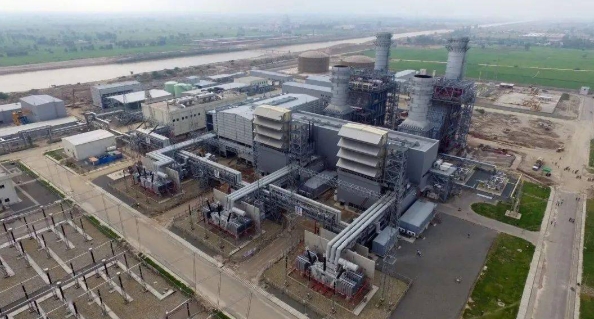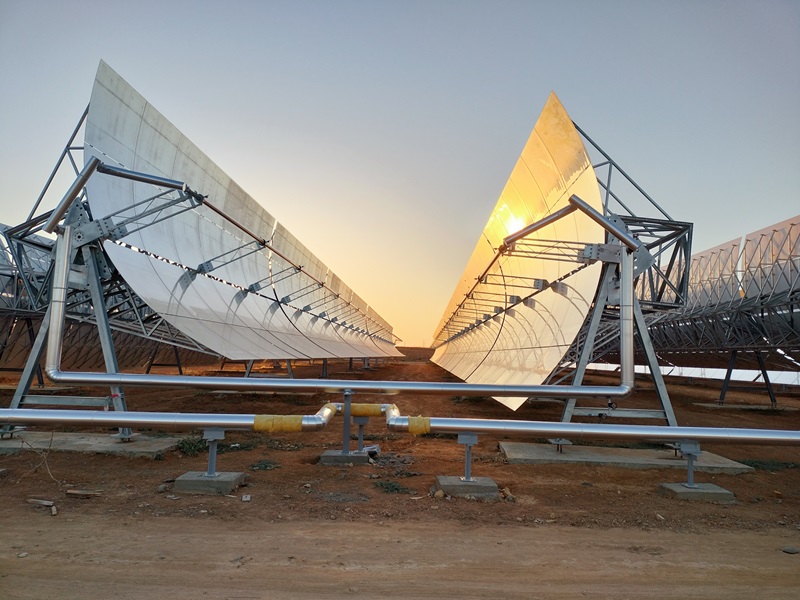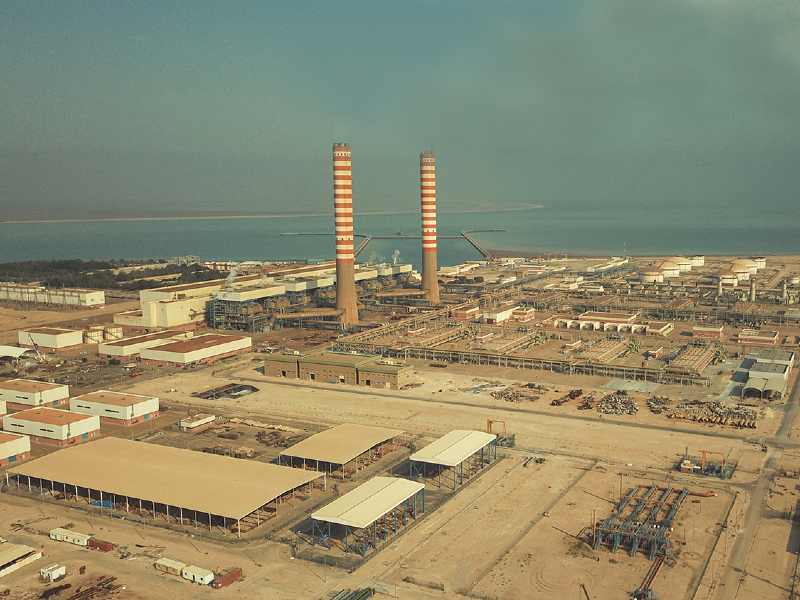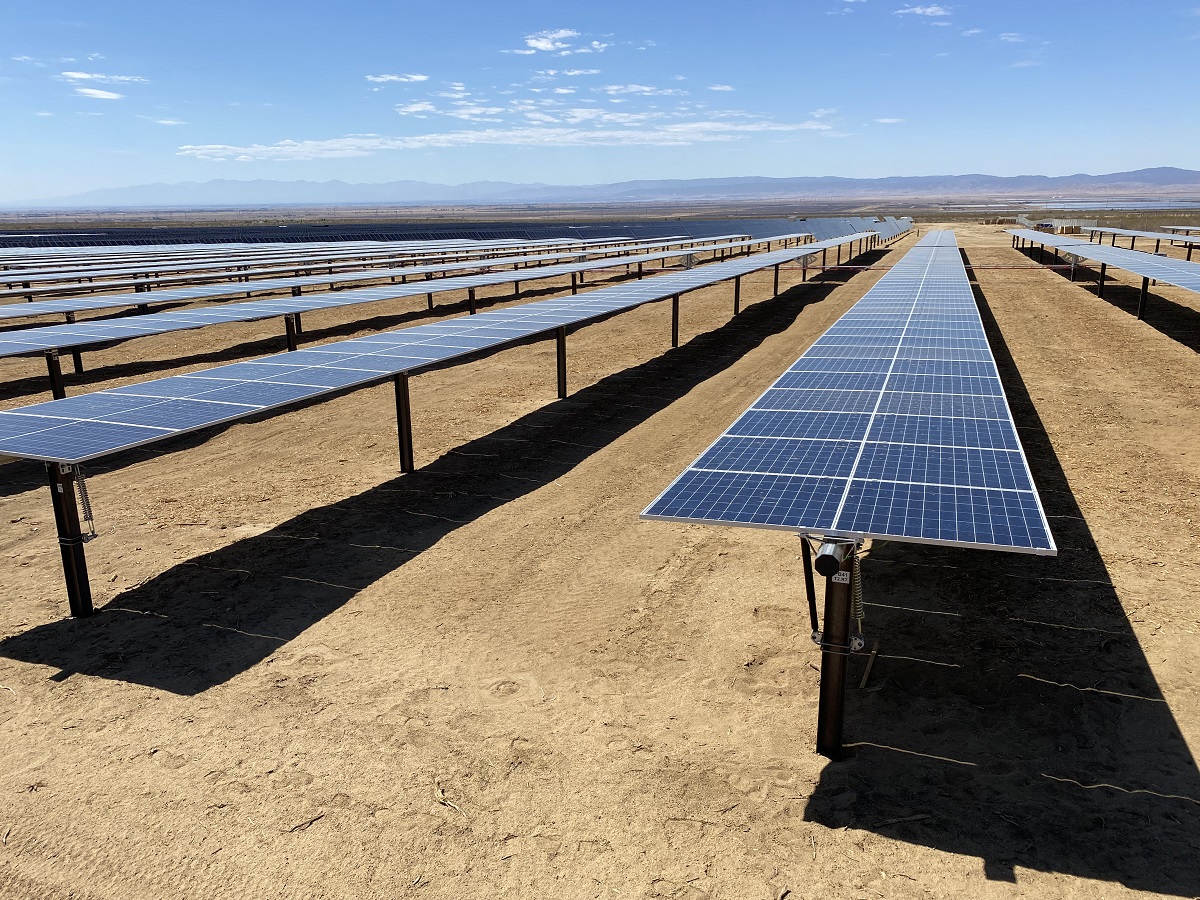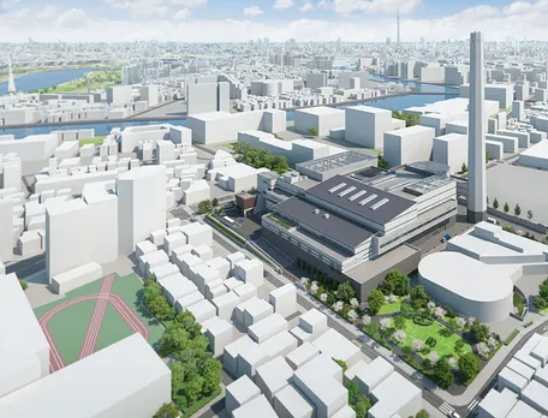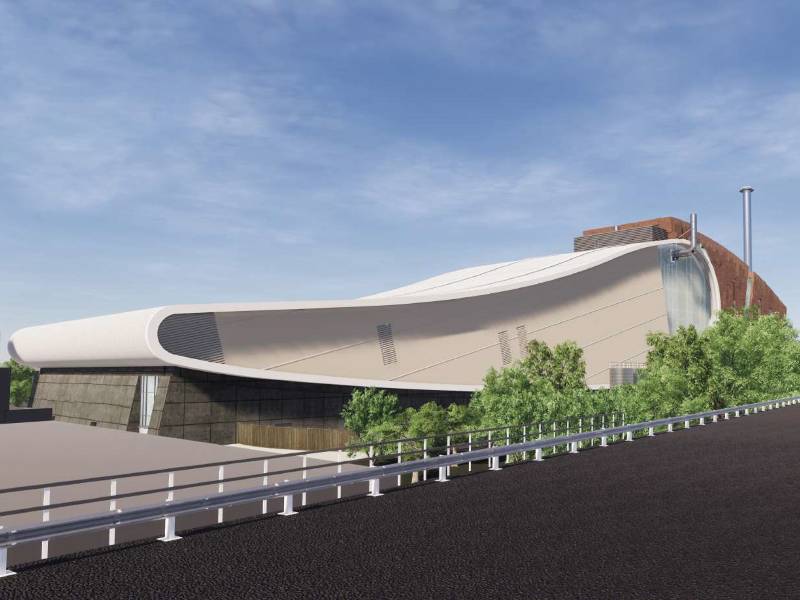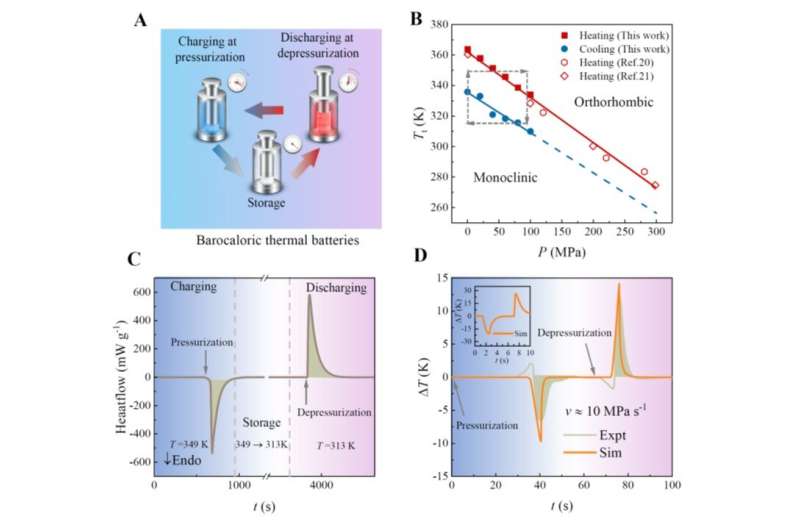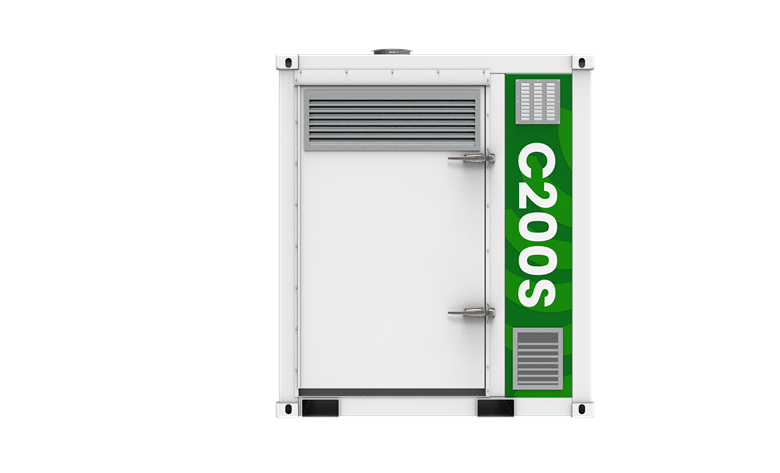Of the 449 nuclear power plants worldwide, 41 are located in Central and Eastern Europe. Ukraine tops the list with 15 operational reactors and two more under construction.
“The need for the reliable, predictable and clean electricity generated by nuclear has never been greater and, worldwide, that is reflected in the growing number of new build programmes underway,” says Agneta Rising, director general of the World Nuclear Association. “However, a number of factors – both internal and external – are creating profound challenges for nuclear power in some of its most mature markets.”
Slovakia is the country that relies the most on nuclear: it provides 55 per cent of the country’s total electricity. It is followed by Hungary (50 per cent), Ukraine (49 per cent) and Slovenia (37 per cent).
“Nuclear energy is inevitable in the Hungarian energy mix,” explains Attila Aszodi, professor at the Budapest University of Technology and Economics. “Paks nuclear power plant is not only a carbon-free source of electricity but also the largest power plant in the country. And this provides baseload power.”
“Roughly one third of Slovenian electricity comes from nuclear, one third from lignite, and up to one third from hydropower plants,” adds Iztok Tiselj, head of the Nuclear Engineering Department at the University of Ljubljana. “The cheapest source of electricity in Slovenia is hydroelectric, which provides between a quarter and a third of electricity. However, roughly half of our hydro potential is already used and there is a legitimate question as to whether we want to use all of our rivers for electricity production.”
“If we are serious about being self-sufficient in our electricity supply and serious about decarbonisation, nuclear remains the only option: at least at a roughly predictable price,” Mr Tiselj tells Emerging Europe. “Wind and solar are mentioned as another alternative, but Slovenian wind potential is poor, although solar is fine. However, without efficient electricity storage technologies these two resources can only provide a rather small share of electricity. And the progress being made in electricity storage is not particularly promising in my opinion.”
Nuclear at all costs
The Czech Republic currently has the most aggressive nuclear policy. The country’s prime minister, Andrej Babiš, has said that the country must construct new reactors at the Temelín and Dukovany nuclear power plants, located in South Bohemia and South Moravia, even if it means violating European law.
“We overslept in regards to nuclear energy,” he recently told the European committee of the lower house of the Czech parliament. “We could have been building Temelín by now. We must push this through even if it means violating European law. Energy security is our priority.”
It is not the first time that the Czech Republic – and many other countries – have promoted the construction of new reactors.
The project to build two new reactors at Temelín received a positive environmental impact assessment more than 10 years ago. A tender, launched by utility group ČEZ, remained open until 2014 but ended after the government refused to confirm a guaranteed purchase price.
“The day after that the tender was cancelled, and the whole project was sidelined with it,” says Edvard Sequens, chairman of Calla, the Czech Association for Preservation of the Environment. “The reason for the hesitation is the lack of clarity on how to push through an uneconomic and risky investment despite the disapproval of ČEZ’s minority shareholders and the deception of the business-investment model.”
Therefore, the Czech Ministry of Industry looked for other ways to implement its nuclear projects. One of the solutions, supported by Mr Babiš, asks ČEZ to finance directly new nuclear reactors, relying on the fact that the company has enough spare cash.
“Sorry, but we’re talking at least 200 billion Czech crowns per reactor, probably more,” Mr Sequens tells Emerging Europe. “A contract is now being prepared between ČEZ and the government, in which the state will undertake to guarantee bank loans, and should the project prove unrealisable, an option should be included in the contract which allows the state to take over the reactors. I am afraid that the guaranteed price of electricity for ČEZ will again be in play and the overall impact could be more than one trillion crowns.”
Industry Minister Marta Nováková told Czech Television that the European Commission suggested her ministry should follow the Hungarian model.
“Energy, primarily nuclear energy, is a political decision, not an economic one,” she said. “There must be the political will to complete the construction of Dukovany or Temelín and a decision must be made about how to finance it. There is not a single nuclear power plant in the world that could have been built without some form of state aid. That means we will have to count on some kind of assistance if an energy concept stating that we will complete construction of some nuclear facilities applies.”
Paks: A positive case of transparency
Paks, in Hungary, is a positive example of nuclear reactors being built under totally transparent conditions, primarily because of a battle won by the Green party at European level. Operational since 1982, construction of two new reactors began this year. However, not everyone in Hungary is happy.
“The EU electricity market is currently undergoing a transition, and it’s very difficult to say exactly what it will look like in future,” says Bender Jávor, a former Hungarian MP. “Nevertheless, it’s quite clear that the market is becoming much more flexible and will be based increasingly on local small-scale installations. The age of big utilities is over, and base-load generation will no longer play an important role. In renewables, costs are declining very quickly. We can also mention natural gas power plants, the construction of which is much cheaper than that of nuclear power plants. This is why, once prices rise, it will still be much more profitable to invest in renewable sources or natural gas.”
“When you have a large proportion of renewables in your energy mix, you also need flexible energy sources to provide grid regulation,” he continued. “Natural gas power plants are a good fit here, but in the long run even natural gas could be phased out of the system, which will be based on renewables and a high degree of demand-side management, in other words smart technologies and energy efficiency. I cannot see any place for nuclear power plants in such an energy system.”
Hungary’s president, János Áder, does not agree. He has announced that the country will phase out coal-fired electricity generation by 2030 to help reduce emissions and tackle climate change.
“Hungary will increase its solar power capacity 10 times by 2030. It will stop producing energy from coal while expanding production of nuclear power plants,” he said on September 24 at the UN Climate Action Summit in New York. “Thanks to the combined effect of these three measures, 90 per cent of Hungary’s electricity production will be carbon-free by 2030 and not by 2050.”
“I think that the phase-out of coal is necessary to reach the climate protection targets of the country,” Mr Aszodi tells Emerging Europe. “We see an intensive development in photovoltaic which is driven by the subsidies. As I see it the capacity of photovoltaic cells online could be 3000-5,000 MW within few years if there will be no remarkable change in the subsidy schemas; but these capacities will be intermittent, heavily weather dependent. Paks II will have a capacity of 2,400 MW, delivering baseload power. Intermittent and baseload sources are not really alternatives, they have different functionality in the grid. The stable operation of the grid will be mandatory for all electricity consumers, including industry and households. Nuclear can produce power at a competitive price.”
Environmental concerns
Nuclear power poses environmental challenges: accidents, waste, non-proliferation. But why are people worried about nuclear, even after environmental impact assets have been approved? In Hungary there have been increasing concerns over the impact of hotter summers on the availability of cooling water due to higher water temperatures from the Danube river. Also, concerns have been raised over the suitability of Paks for siting nuclear power plants due to seismic hazards.
“The question of the heat load of the Danube river was in focus during the environmental licensing, and the topic of site characteristics (including seismic issues) during the site licensing process,” says Mr Aszodi. “The competent authorities made the necessary steps, prescribing several limitations and conditions related to the design of the plant. All what is written in these specific licenses are obligations for the designer (the contractor) and for the licensee (the Paks II project company); they are obliged to fulfil the conditions of the licenses and the atomic act. If they do their job properly all these issues will be settled.”
At the same time, Slovenian data shows that the risks imposed by the nuclear reactors are much lower than the risks of comparable human activities
“The minor specific concern is related to the most probable location of the potential new nuclear block. Krško region is seismically active, thus the earthquake resistance of the new block should be emphasised,” underlines Mr Tiselj.
“The impacts of nuclear power plants on the environment and population are evaluated and assessed in the environmental report and the environmental impact assessment report as they are developed,” adds Nadja Zeleznik, chair of the Milan Vidmar Electric Power Research Institute (EIMV) in Slovenia. “The perception of the public in general is still sceptical towards nuclear power plants. However, if there would be a process established, the opinion, in particular amongst the local population, could change. There are mechanisms already in place like decrees on compensation for the local community for limited land use.”
A time sensitive matter
It is not just a reduction in carbon emissions that needs to be taken into account. Cost and time are also part of the equation.
“New nuclear reactors offer a delayed solution. We need to shut down our coal-fired power plants faster than new reactors could theoretically arise,” says Mr Sequens. “They will commit huge funds that could be invested in energy efficiency and renewable energy.”
And many upgrades and new constructions are needed in order to avoid disasters like Chernobyl or Fukushima.
Slovenia’s sole nuclear power plant, Krsko (NEK), shut down for regular maintenance on October 1. The process included a change of fuel and modernisations to improve the security and efficiency of the plant.
Slovenia has been considering a new nuclear unit since 2010 but no advancement of the project has been made.
“A new nuclear unit was never seriously mentioned in any of the Slovenian energy strategy documents,” comments Mr Tiselj. “We have been preparing such documents for more than a decade, but electricity and energy are topics that can always be postponed because of some other, more urgent topics, which come across the agendas of our politicians. So the key question here is, in my opinion, how to proritise energy related questions in Slovenian politics. I have no idea what the answer to this billion-dollar question could be.”
